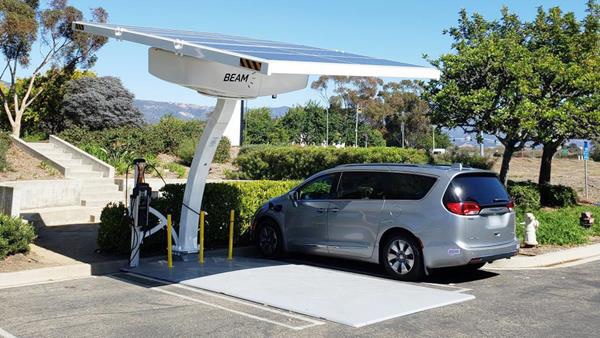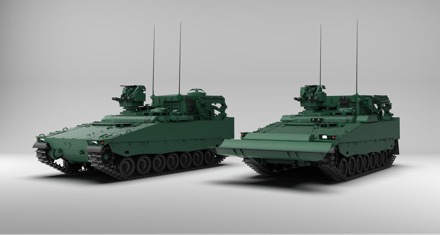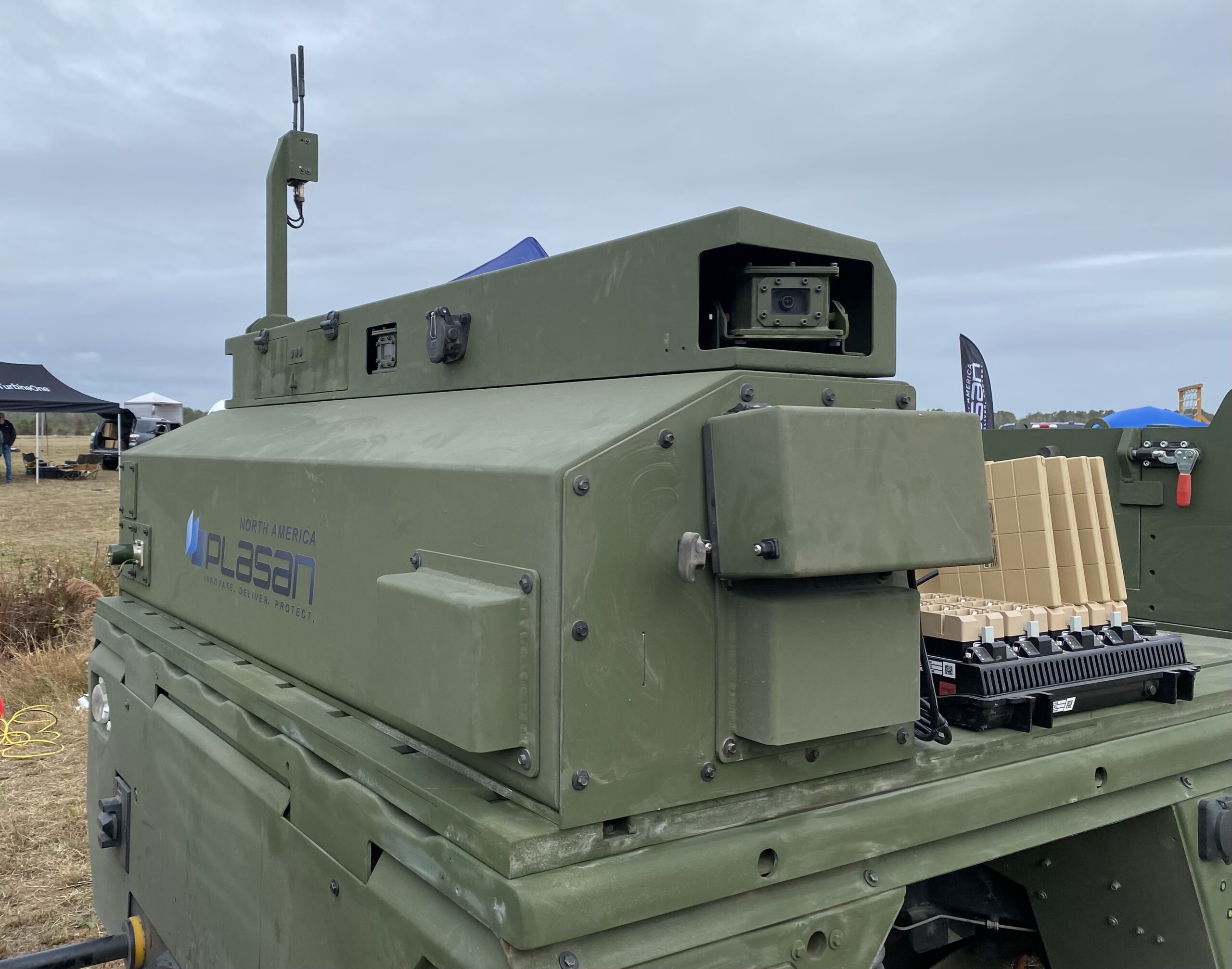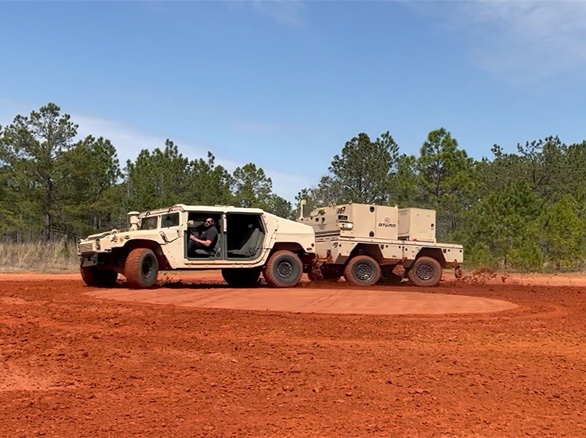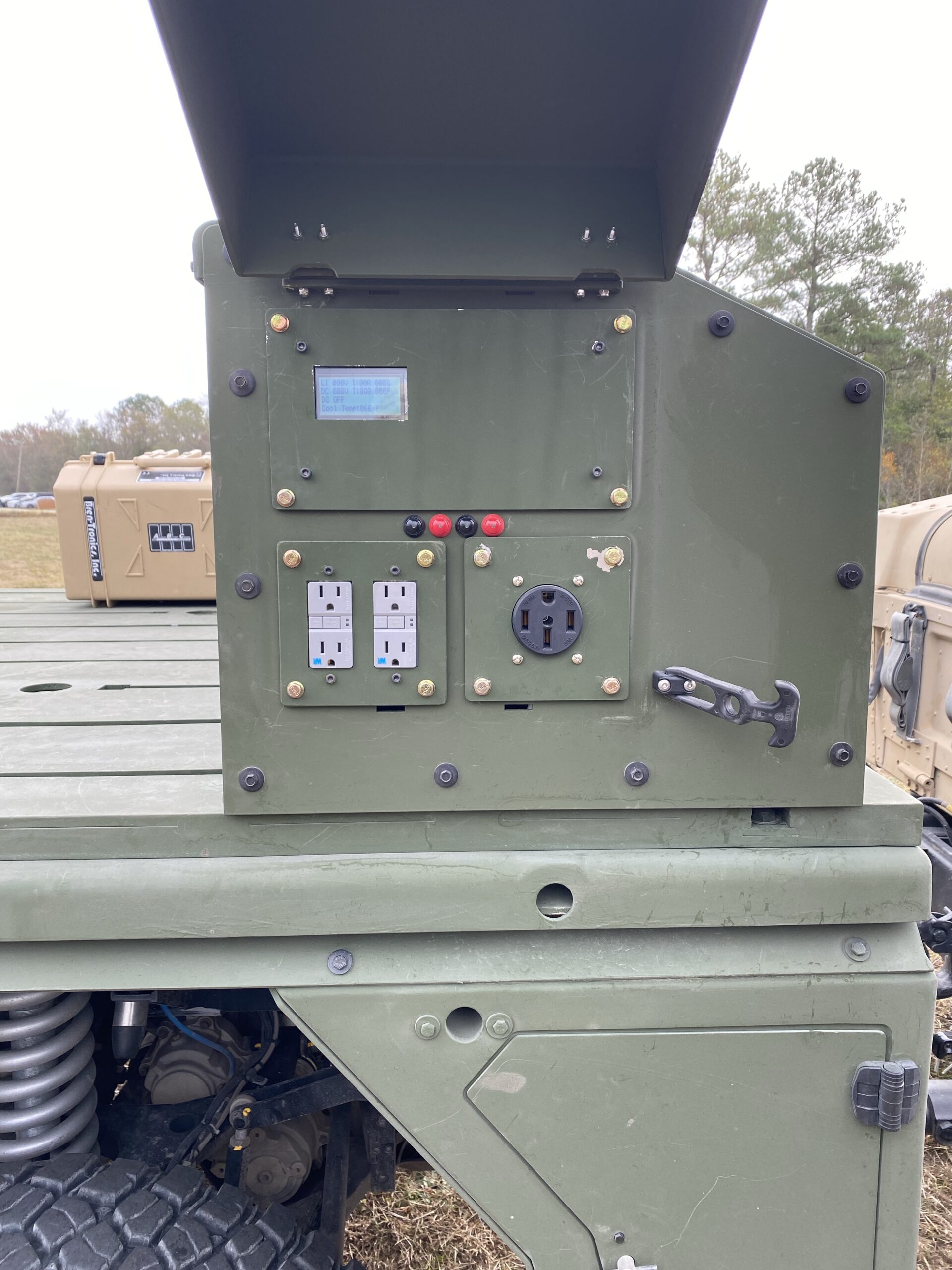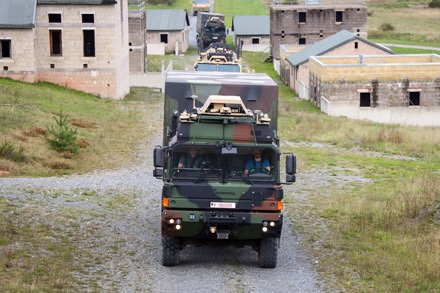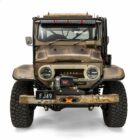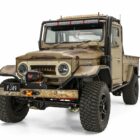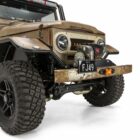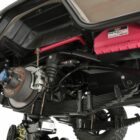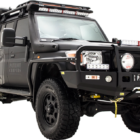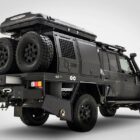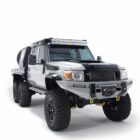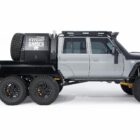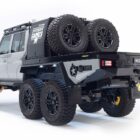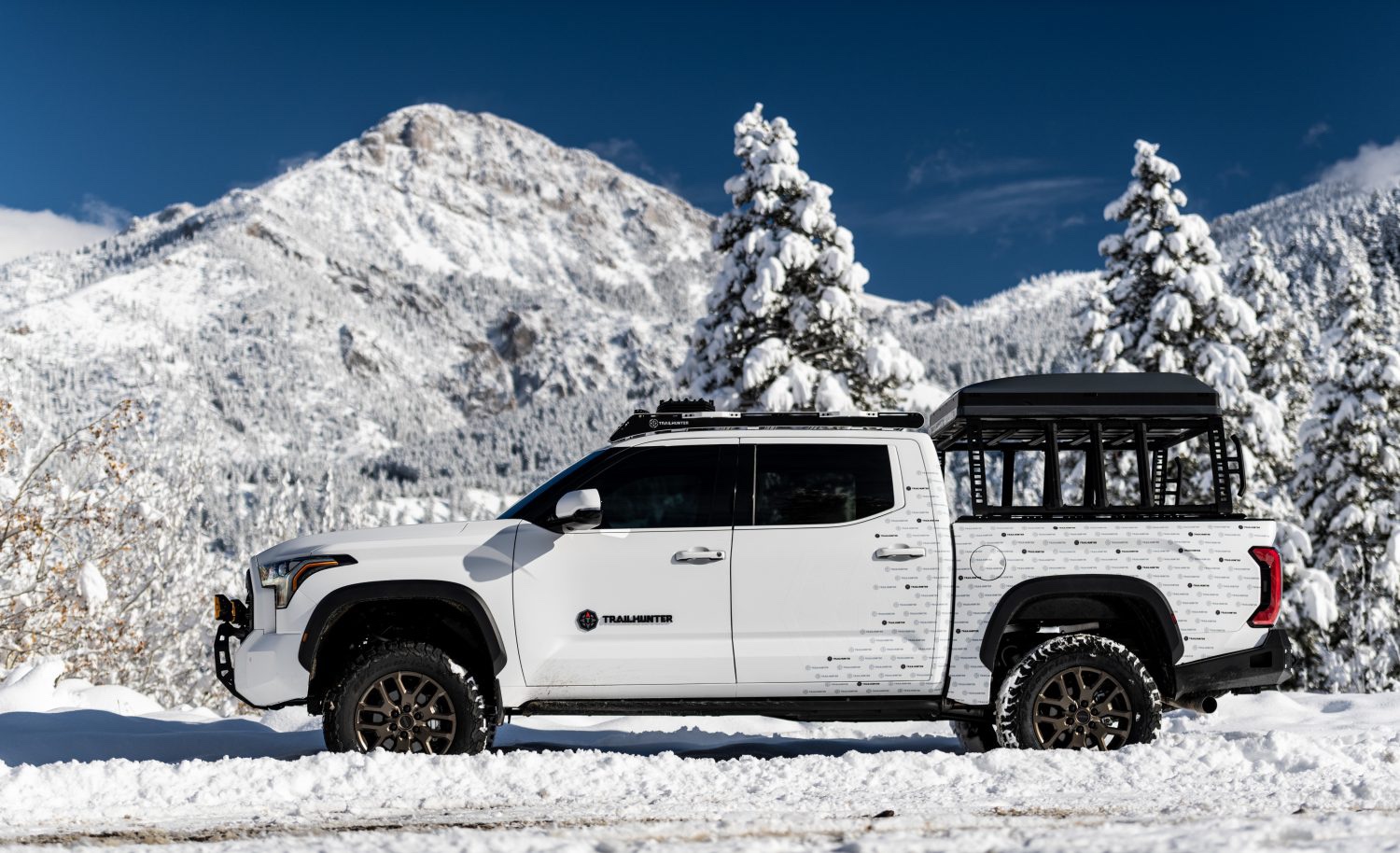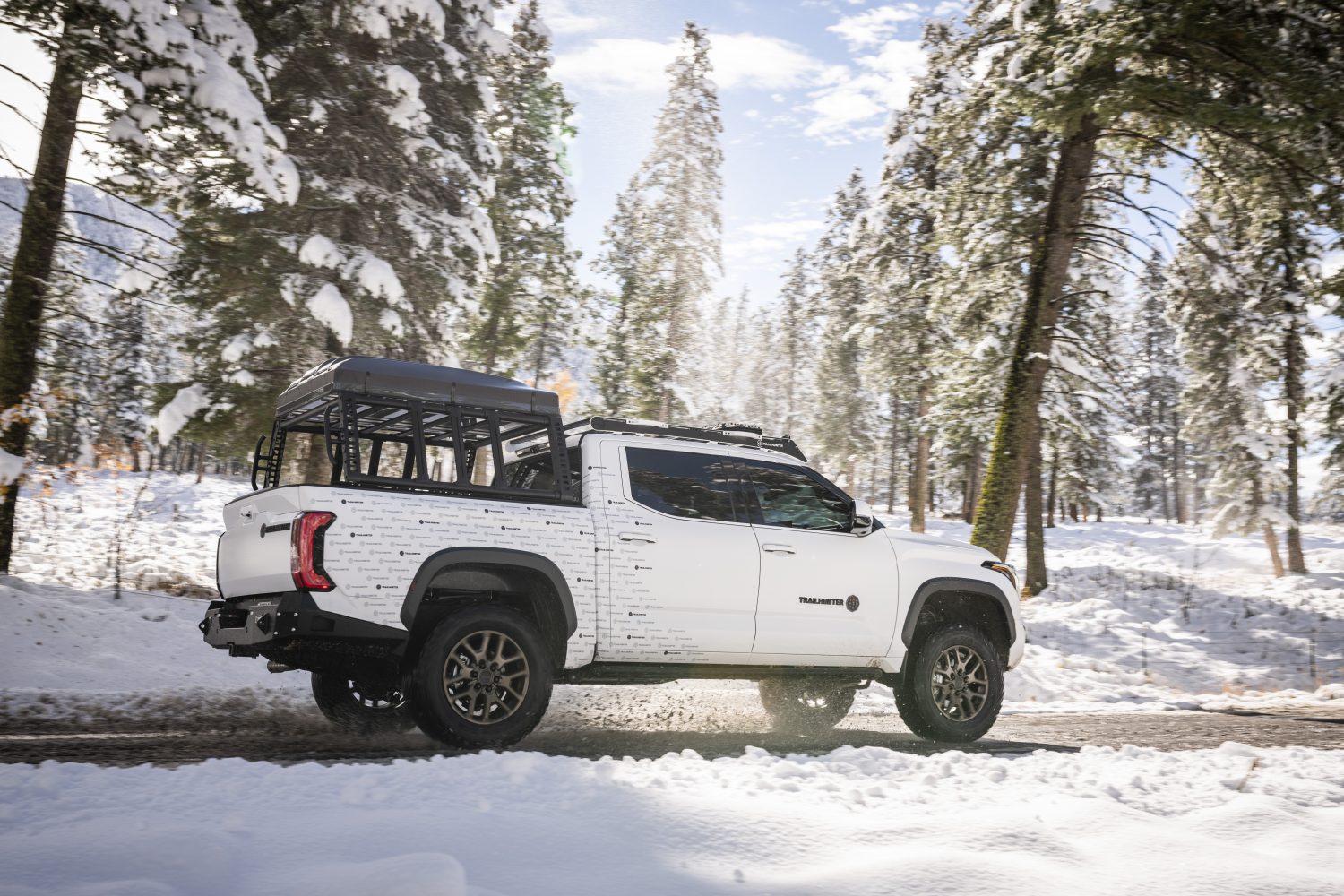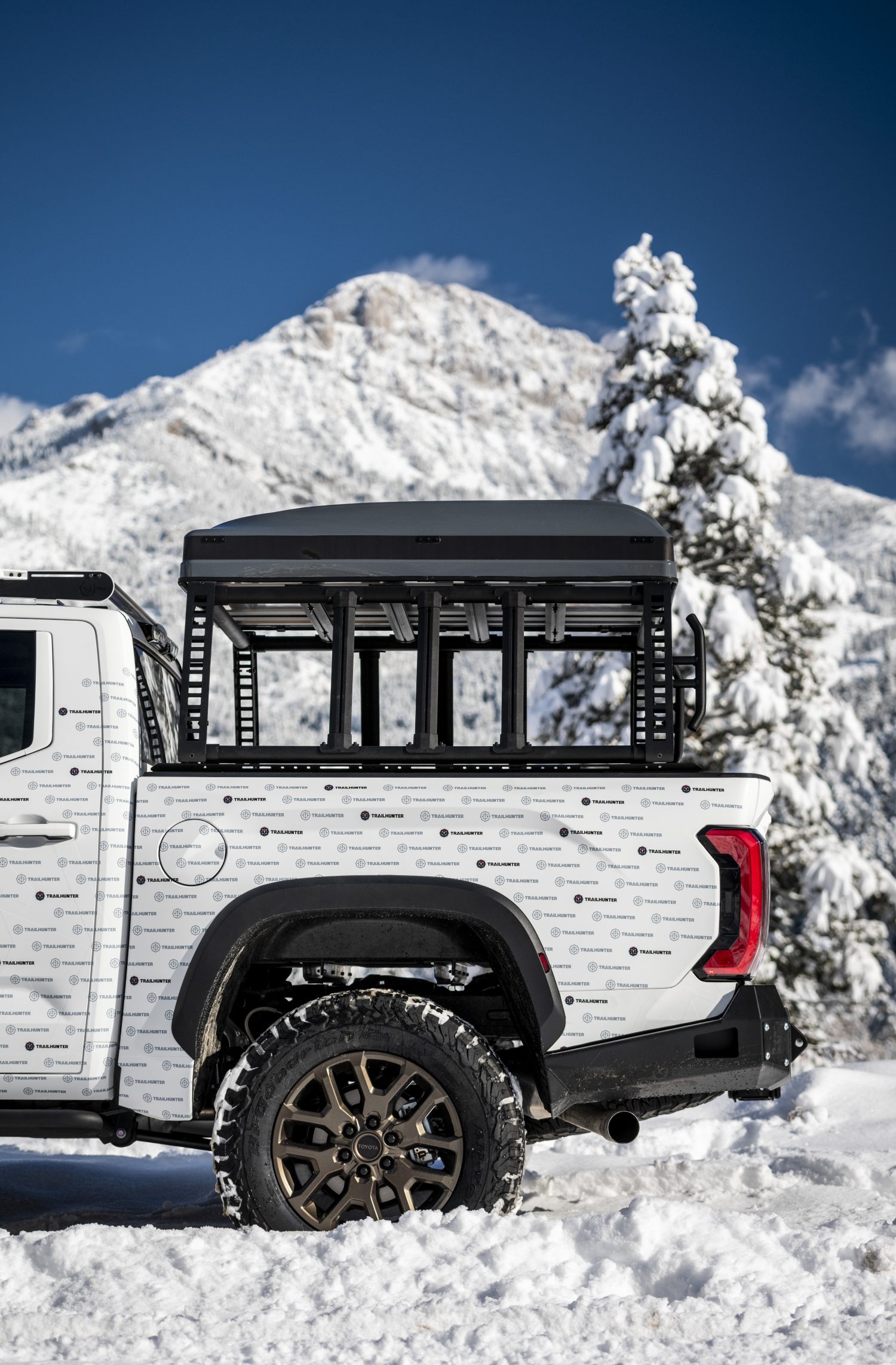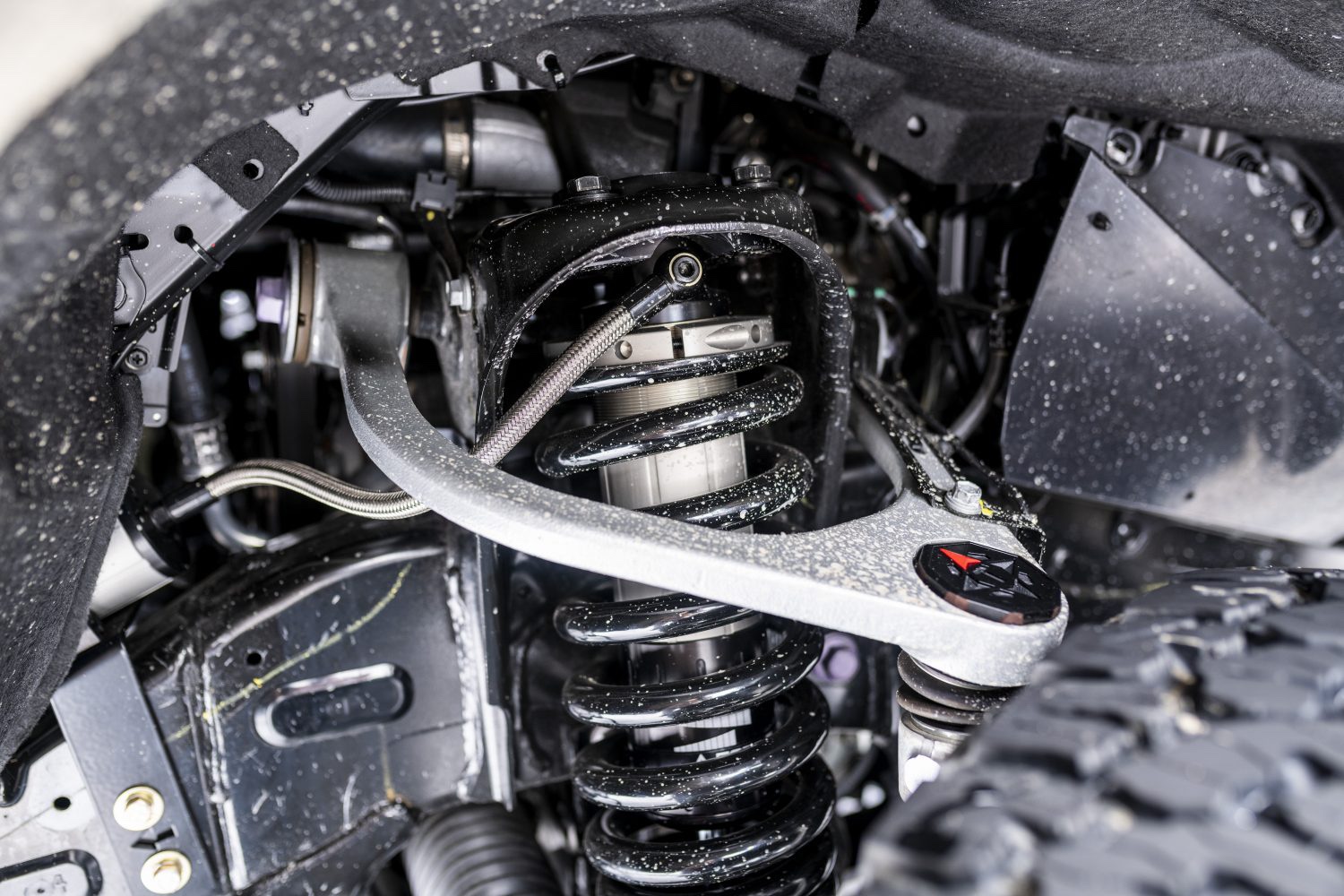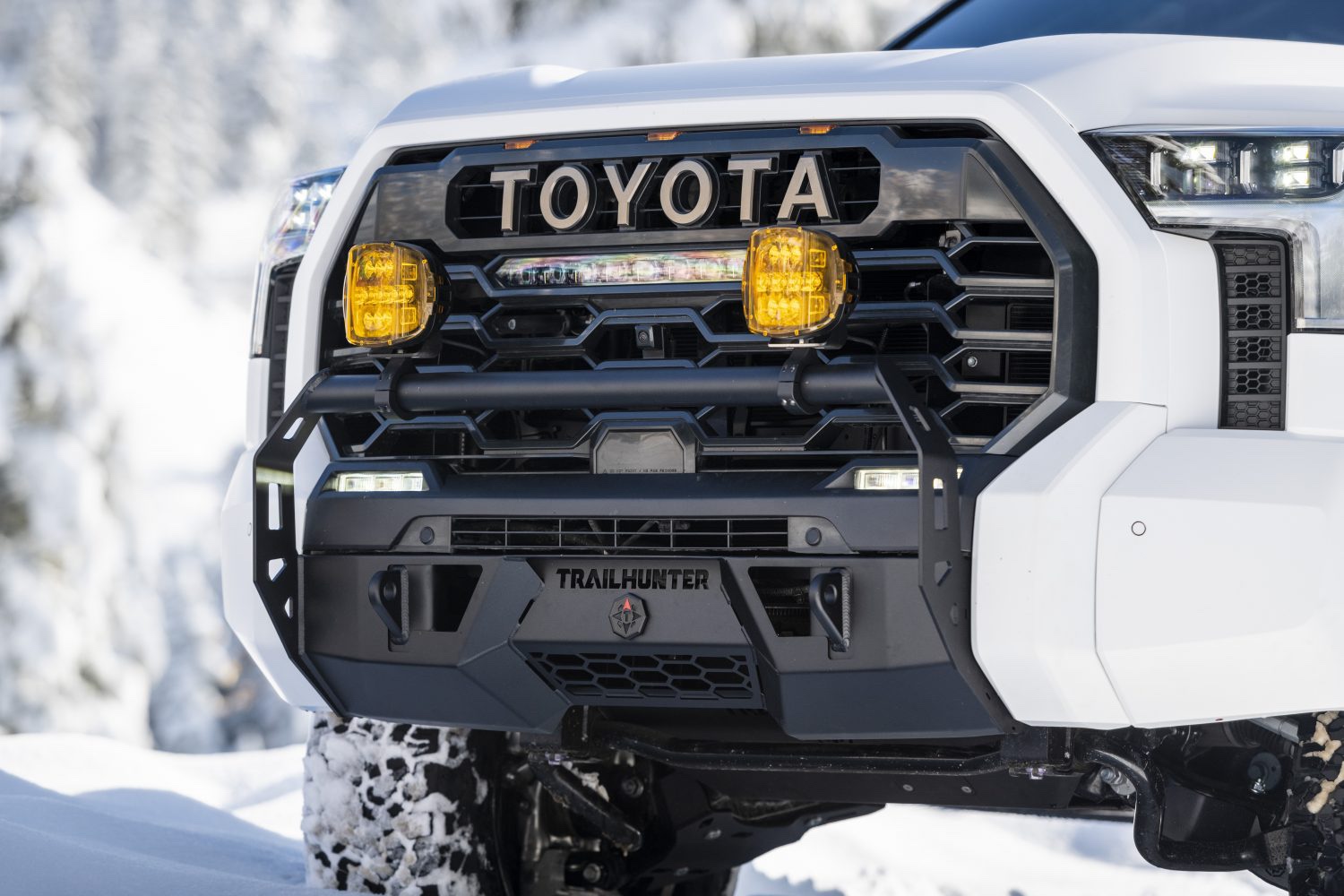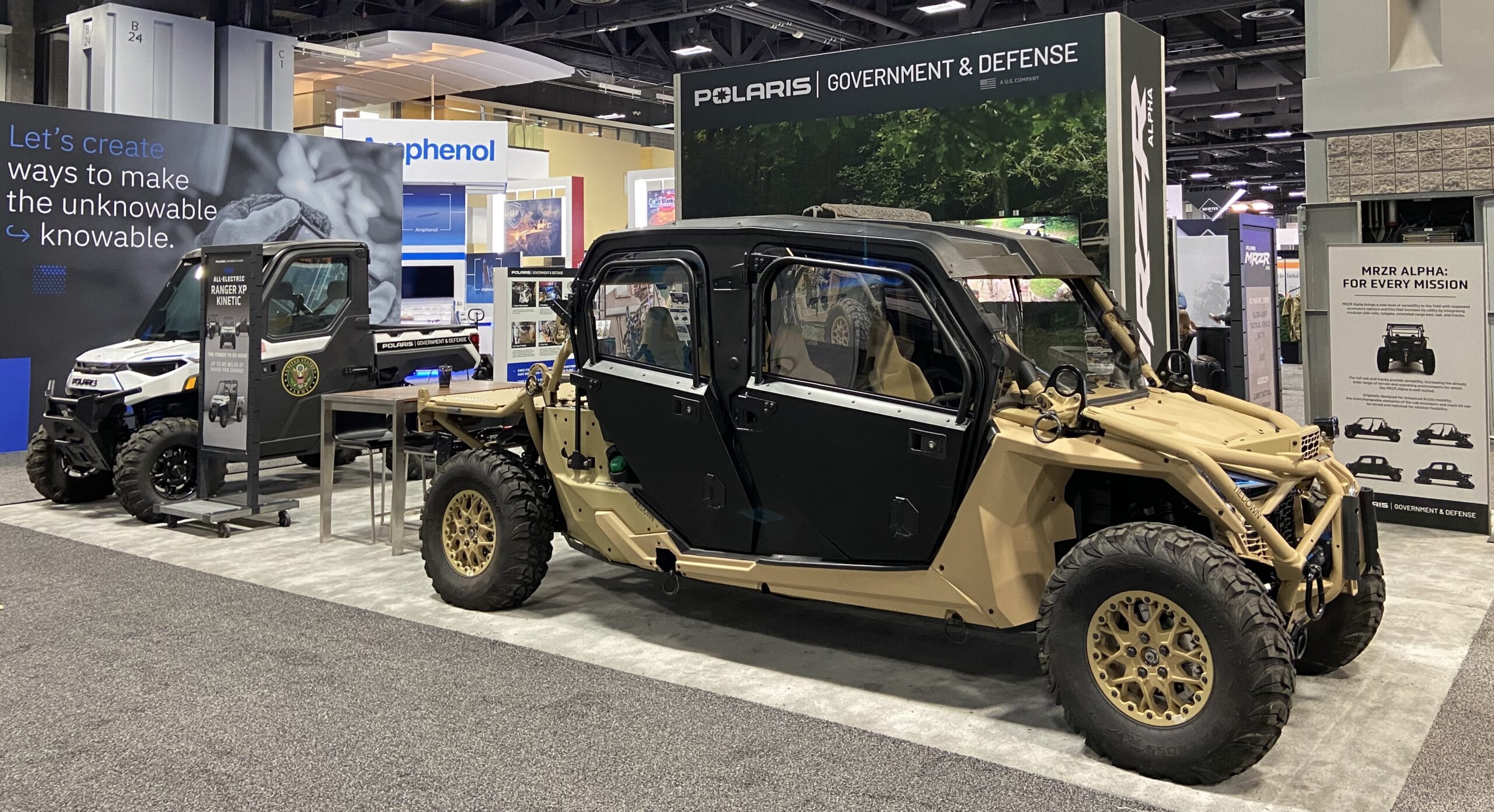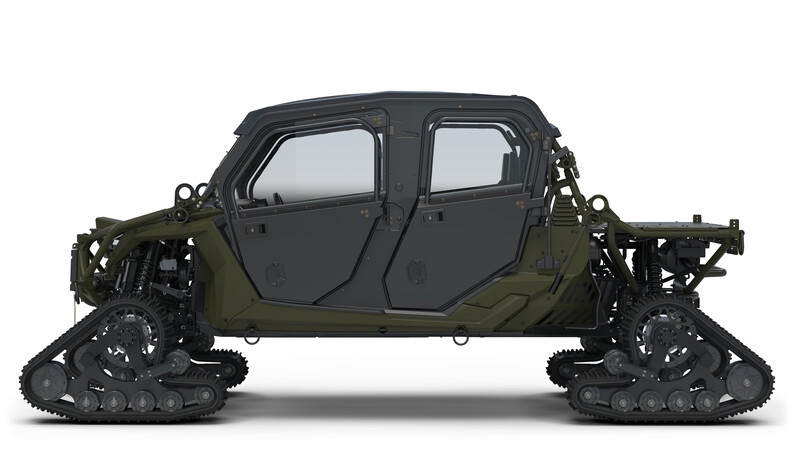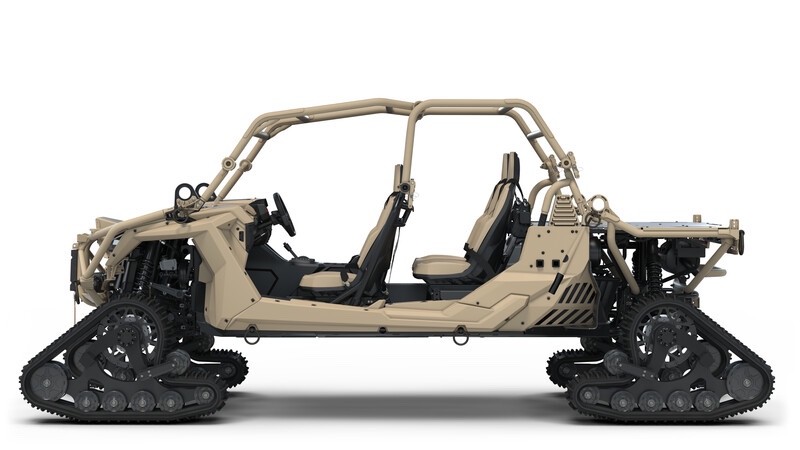Three Exotic Toyota Builds from Australia’s Patriot Campers Give Show Attendees a Glimpse into Aussie Off-Roading and Overlanding Fun

LAS VEGAS (Nov. 1, 2022) – When Justin Montesalvo – director of Patriot Campers, based in the gorgeous Gold Coast, Queensland, area of Australia – visited the SEMA Show, he came away inspired by the scale of the builds he saw at North America’s premier automotive aftermarket exhibition.
Montesalvo, who posts entertaining “Patriot Games” videos on his YouTube channel and Patriotgames.tv website featuring his team’s builds, clearly has a wealth of creativity and building skills. Yet everyone can benefit from seeing in person the off-road and overlanding creativity of colleagues around the globe.
With his newfound inspiration, Montesalvo set about creating three outrageous Patriot Campers machines: The FJ49, the LC79 Supertourer – affectionately dubbed the “Black Truck” – and the LC79 6×6 Megatourer.
“The Patriot Campers rigs are absolutely stunning and have quite the presence,” said Lisa Materazzo, group vice president – Toyota Division Marketing. “The creativity and workmanship are a testament to Justin Montesalvo and his team’s abilities. And let’s not forget his sons, Ashton and Christian, who cut their upgrading teeth on their own build, the FJ49.”
All builds are on display in Toyota’s 2022 SEMA Show exhibit (Central Hall, Booth No. 22200) at the Las Vegas Convention Center, a new and expanded space befitting of Toyota’s growing commitment to on- and off-road performance, excitement and adventure.
The FJ49: First Vehicle Dreams Do Come True
Twin brothers Christian and Ashton Montesalvo worked at Patriot Campers during school holidays since their pre-teen years, learning under their father’s tutelage and alongside expert mentors. Last year, the twins began searching for their first cars, and Ashton purchased a 1977 FJ45 Land Cruiser. Soon after, he, Christian, and dad started conceptualizing an FJ45 with modern technologies and components.
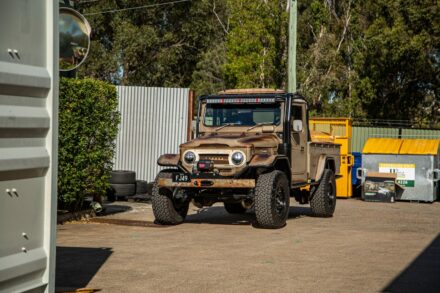
With dad and the Patriot Campers mentors’ guidance, coupled with years of Ashton’s hard-earned work savings as his budget, the brothers got to work, looking forward to testing their amassed skills. Obtaining a donor Toyota Land Cruiser 79 Series former mining vehicle, they swapped the engine, transmission, air conditioning, differentials and springs, leveraging this platform’s proven performance and reliability.
They then added a custom coil spring suspension up front, a JMACX heavy duty differential upgrade for the 79 series Land Cruiser leaf spring suspension and a stainless-steel exhaust system. Next came exterior additions like custom flares, bars and a tow bar; Warn® winch; LED driving lights and two light bars; an exo-cage engineered and fabricated by Patriot Campers; and a custom vehicle management system from Redarc Electronics®. To match the FJ49’s patina-inspired scheme, inside the brothers kept the retro look, only adding new upholstery, an overhead console and a Nardi® steering wheel.
The result is a rig that is dependable, comfortable and off-road capable, with pure retro appeal and charisma, proving dreams do come true.
The LC79 Supertourer: This Rig and a Patriot Campers X3 Trailer Extend Any Outback Journey

When Justin Montesalvo and his team dreamed up and built the LC79 Supertourer – affectionately named the “Black Truck” – the goal was a rig that was both aggressively good looking and fully capable of off-the-grid journeys. They started with a Toyota Land Cruiser 70 Series GLX and extended the frame 11.8 inches to accommodate the Patriot Campers-designed Supertourer body.
Engine, suspension, wheel and tire upgrades, an air snorkel, an LED light package and light bar and front and rear winches help ensure trail versatility. A full suite of overlanding enhancements such as ample storage, a kitchenette, slide-out refrigerator, pop-up tent and platform, mini canopy, air compressor, water tank and navigation and communications systems round out the package.

In order to go farther, stay longer and extend the fun, the team hitched on a Patriots Campers X3 Trailer. Built to be tough, the X3 Trailer comes with an all-weather cabin with diesel tent heating and hot water as standard features. Ample interior and exterior storage, a PCOR® awning, a large outside kitchen, a slide-out 75-liter dual zone refrigerator freezer, 130 liters of water capacity from twin water tanks pumping hot water to the kitchen sink, a 1500-watt inverter, two 150-amp hour AGM Battery® gel batteries and a semi-integrated 80-watt solar panel provide all the comforts for the long haul.
The LC79 6×6 Megatourer: Extra Axle, Extra Wheels, All the Gear = Big Fun
Following the fanfare and praise of the Patriot Campers LC79 Supertourer, Montesalvo took his off-road and overlanding creativity to the next level. He began conceptualizing the possibilities and the challenges, leveraging the partner relationships that brought the Supertourer to life. With absolute confidence in his and his team’s expert capabilities, Montesalvo dreamed of a six-wheel off-pavement rig for overlanding journeys.
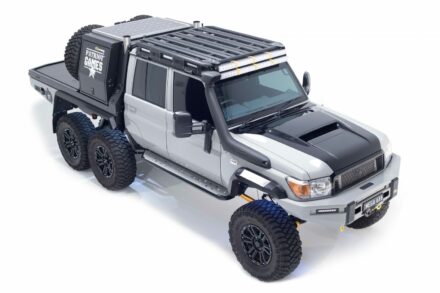
The result is the Megatourer. With a tough, purpose-built and aggressive look, Megatourer is real-world capable. It is the next generation of Supertourer styling with reworked rear toolboxes, angled sheet metal front and rear guards and on top of the Land Cruisers’ dual cab is an integrated Pioneer platform from Rhino for additional storage.
The team collaborated with JMACX Offroad Solutions to modify a Land Cruiser 79 Series chassis to accept an extra axle and wheels. The Custom 6×6 set up uses an Airbag Man adjustable custom air ride system with one-off TJM® shocks with adjustable height and damping, providing 8 inches of total lift. There are WP Pro Brakes with 14.2-inch discs and six-piston calipers behind ROH 18-inch wheels with Mickey Thompson® 37-inch mud tires.
Patriot Campers worked with GSL to rework the 4.2-liter inline 6-cylinder diesel engine, adding an upgraded turbocharger and lobster-back welded intake and turbocharger ducting. An air snorkel kit aids with the inevitable water-crossings.
Other accessories include X-Ray Vision dual row LED lightbars, a hoop-less slimline body-colored bull bar, twin angle-mounted spare tire carriers, front and rear TJM winches, two 240-liter Brown Davis replacement fuel tanks with auxiliary fuel distribution switch and pre-fuel filter kit, twin air-outlets to manage tire pressures, a 70L water tank and a lockable mini canopy with a 60-liter refrigerator.
A Nappa leather and suede-trim interior with an 8-inch Alpine screen and custom instrument consoles provide comfort and functionality. And behind the rear seat is a Redarc Electronics management system that powers two lithium and two AGM batteries, twin compressors, twin air tanks, solar panels and a full lighting system from X-Ray Vision.
With its full suite of trail versatility and its overlanding and base camp features, the Megatourer has everything needed for off-road adventure and exploration.
Toyota is displaying a variety of special concept vehicles showcasing off- and on-road performance and adventure as well as an array of production cars, trucks and SUVs in its exhibit at the Las Vegas Convention Center, Nov. 1-4, 2022.
Vehicles described are special project prototype vehicles, modified with parts and/or accessories not available from Toyota may void the vehicle’s warranty, may negatively impact vehicle performance and safety, and may not be street legal.
